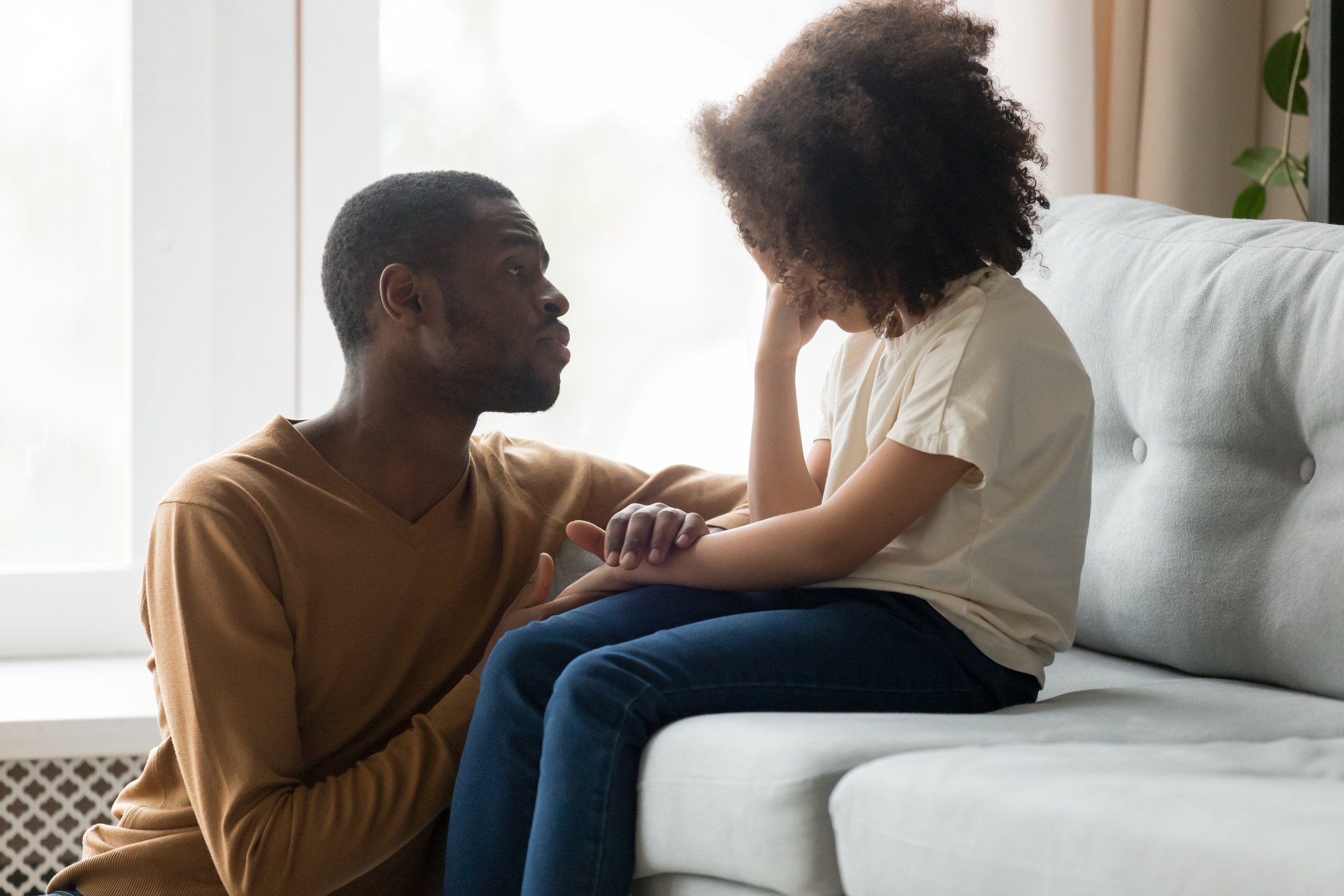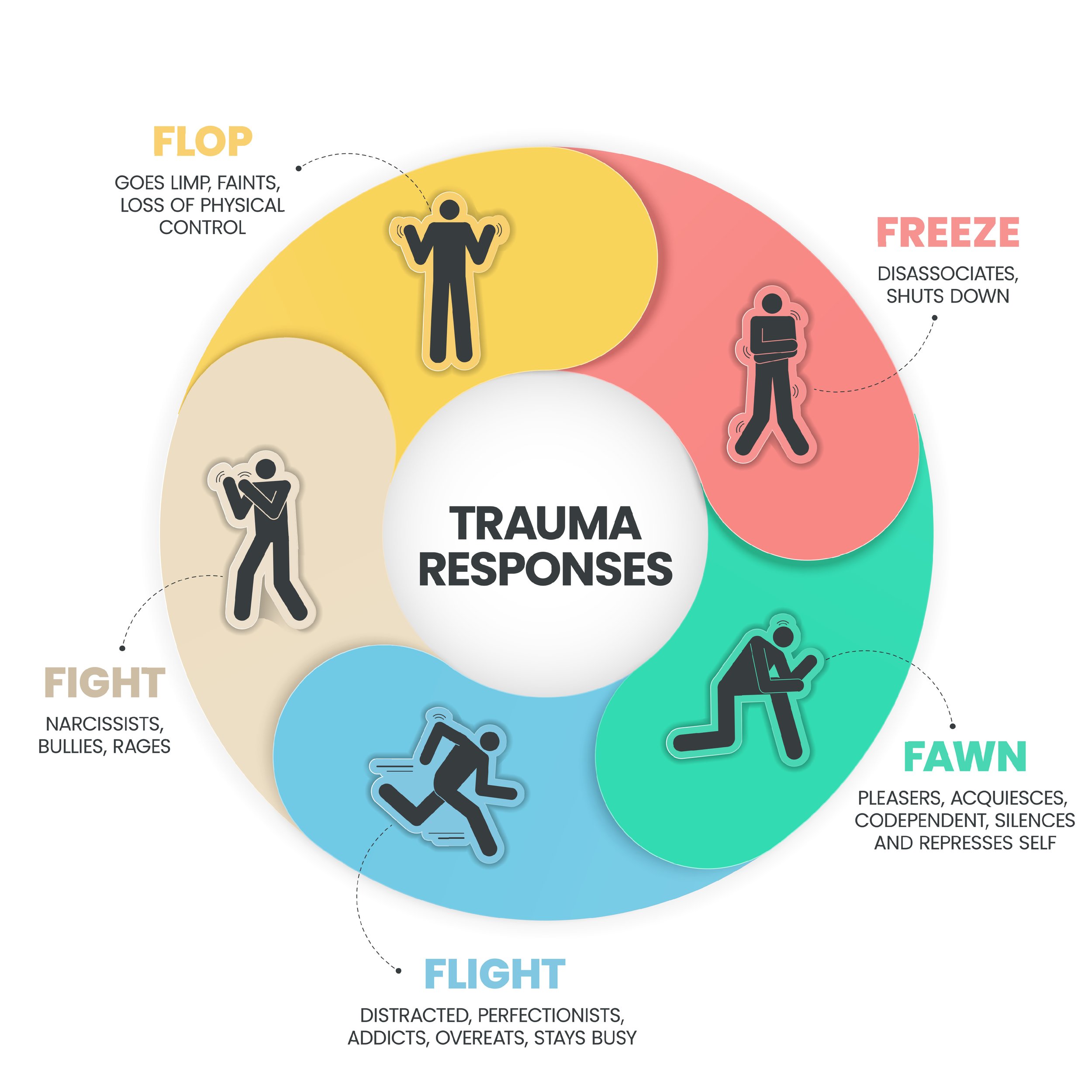COREGULATION: MANAGING EMOTIONAL DYSREGULATION THROUGH CONNECTION
Emotional dysregulation can be particularly disruptive to daily life when an individual has difficulty regulating their emotions in ways that are adaptive and appropriate. This can manifest in a variety of ways including intense or overwhelming emotions, mood swings, difficulty managing anger or frustration, impulsivity, self-destructive behaviors, difficulty recovering from negative emotions, and interpersonal problems. These symptoms can have a significant impact on an individual's quality of life, as well as relationships, work, and other important areas of functioning.
Emotional dysregulation can be caused by many factors, including genetic predisposition, brain development, trauma, environment, chronic stress, poor sleep, illness or injury, pain/discomfort, medication, and substance use.
The Nervous System
The autonomic nervous system (ANS) is responsible for regulating bodily functions that occur automatically and unconsciously. The nervous system informs emotional responses without conscious awareness. Understanding your nervous system and how it reacts automatically to social and environmental factors gives you the power to detect reflexive shifts and respond in ways that are safe and supportive in your relationship with yourself and others.
Understanding the ANS: Our Biological Response System
The ANS is the control board for every response we have. It determines whether we embrace connection, run away, defend ourselves, or retreat into isolation. This biological control board is made up of two parts—the sympathetic nervous system, responsible for releasing adrenaline to fuel the “fight-or-flight” response, and the parasympathetic nervous system, responsible for the “freeze” response, “rest and digest” response, and the social engagement/connection system. The social engagement system is unique to mammals and is involved in regulating social interactions and communication. It is also thought to be involved in polyvagal coregulation, as it helps individuals synchronize their ANS responses and establish a sense of connection and trust.
Each ANS state is part of the human body’s biological response to protect. Maladaptive behavior is, at its core, not a pathological deficit. Rather, it is an evolutionary function we employ as humans to survive.
Healing with Coregulation: Tips from a Trauma Therapist in Missoula, MT
In essence, coregulation is the syncing of nervous systems that allows humans to empathize and feel alongside one another. It is closely tied with neuroception, our unconscious “gut feeling” (termed by Stephen Porges’ Polyvagal Theory in 1994). Coregulation is the ultimate tool to create powerful connections and our first line of defense against emotional dysregulation. Knowing how to use it is the key to creating reciprocal understanding and healing through connection. Much of healing involves rewiring maladaptive (or lacking) defenses to recover connection and trust. Though early and persistent childhood experiences shape autonomic reactivity, people can rewire their response patterns and repair relationships, rebuild trust, and regulate emotions in a coordinated and mutually supportive way.
Coregulation Techniques:
Active Listening:
Make a conscious effort to hear not only the words that another person is saying but more importantly, the complete message being communicated. Staying present and practicing full attention, reflecting on what you have heard, and refraining from judgment can lead to deeper connection and empathy.
Awareness of Nonverbal Cues:
Nonverbal cues such as facial expressions, tone of voice, and body language can help individuals signal to each other how they are feeling and what they need. By paying attention to each other's nonverbal cues, we can better understand and respond to each other's needs and emotions.
Validation:
Emotional validation means acknowledging and accepting someone's emotions without judgment, even if we disagree. Through validation, we can confirm that others have their own emotional experiences and that those experiences are real, valued, and important. Feeling heard, understood, and cared for helps us feel safe; feeling safe allows us to express, process, and work through our emotions.
Co-Regulated Breathing:
Co-regulated breathing involves two or more people mirroring their breathing patterns in a way that creates a sense of calm and relaxation. This can look like slowly inhaling together for 4 counts and exhaling fully at the same time for 8 counts.
Engage the Senses:
Engaging the senses through physical touch, sounds (including tone of voice and prosody), and singing, can help activate the PNS. Caring and gentle touch helps release oxytocin, lower heart rate, and slow breathing.
Move Together:
Engaging in shared activities, such as playing games or physical exercise. This can create a sense of mutual enjoyment and shared experience. Moving together synchronously with intentional awareness acts with the social engagement system and can help foster connection and trust.
What is Coregulation Used For?
Coregulation can occur in many contexts. This includes parent-child interactions, romantic relationships, work relationships, and friendships. It involves two or more individuals working together to regulate ANS responses in a way that promotes a sense of safety, comfort, and well-being. Coregulation is an important factor in promoting mental and physical health, as it can help reduce stress and build more resilient relationships. It is also a key component of effective therapy. If you’re interested in learning more about the benefits of therapy, explore Bridger Peaks Counseling. Our therapists offer counseling services to help individuals feel safe and supported while exploring difficult emotions and experiences.
Start Your Journey to Emotional Well-being: Embrace Coregulation Today!
Join Bridger Peak Counseling in building strong connections and empowering your overall well-being! Explore the power of coregulation for a healthier emotional life. Follow the few steps below to get started with an experienced therapist!
Contact us so we can learn more about you!
Begin individual therapy and learn more coregulation tips.
Other Therapy Services, Workshops, and Resources from Bridger Peaks Counseling
In our Bozeman, MT counseling clinic, we can help you through several issues including anxiety, worry, stress, depression, and more. Our caring team of therapists is here for you and your loved ones. We offer addiction treatment, group counseling sessions, EMDR, and Somatic Experiencing for trauma therapy. More opportunities to explore coping patterns, marriage counseling, couples therapy, postpartum depression and anxiety counseling, mindfulness training, workshops, and more tools for client education. We also have a psychiatric nurse practitioner who can provide psychiatric care and medication. We look forward to talking with you soon!
Dana, D. 2018. The Polyvagal Theory in Therapy: Engaging the rhythm of regulation. W W Norton & Co.
Porges, S. W. (2011). The polyvagal theory: Neurophysiological foundations of emotions, attachment, communication, and self-regulation. W W Norton & Co.
Siegel, D. (1999). The developing mind: How relationships and the brain interact to shape who we are. New York: The Guilford Press.
van der Kolk, B. 2014. The Body Keeps the Score: Brain, Mind, and Body in the Healing of Trauma. Penguin




